Getting the most efficient growth out of your herd is a goal for any productive, profitable and sustainable farm, and one of the best ways that you can make your farm more efficient is by focusing on the growth of your heifer calves.
The average age a heifer in the UK has her first calf is at 27 months, according to research from NMR in August 2020 - however, heifers who calve at 24 months have a higher lifetime performance. So, how do help your heifers get ahead of the crowd, and achieve their first calving at 24 months?
Keep reading to get our advice on how to make your herd more productive by adjusting your feeding routine and processes, and for some top tips from real farmers.
Creating an efficient system from Day One
If your heifers are going to reach their first calving at 24 months, you need to set them on the right growth curve from day one - they need to be gaining 0.8kg in body weight each day to reach their target.
Careful colostrum management is needed to make sure your calves get off to the best start.
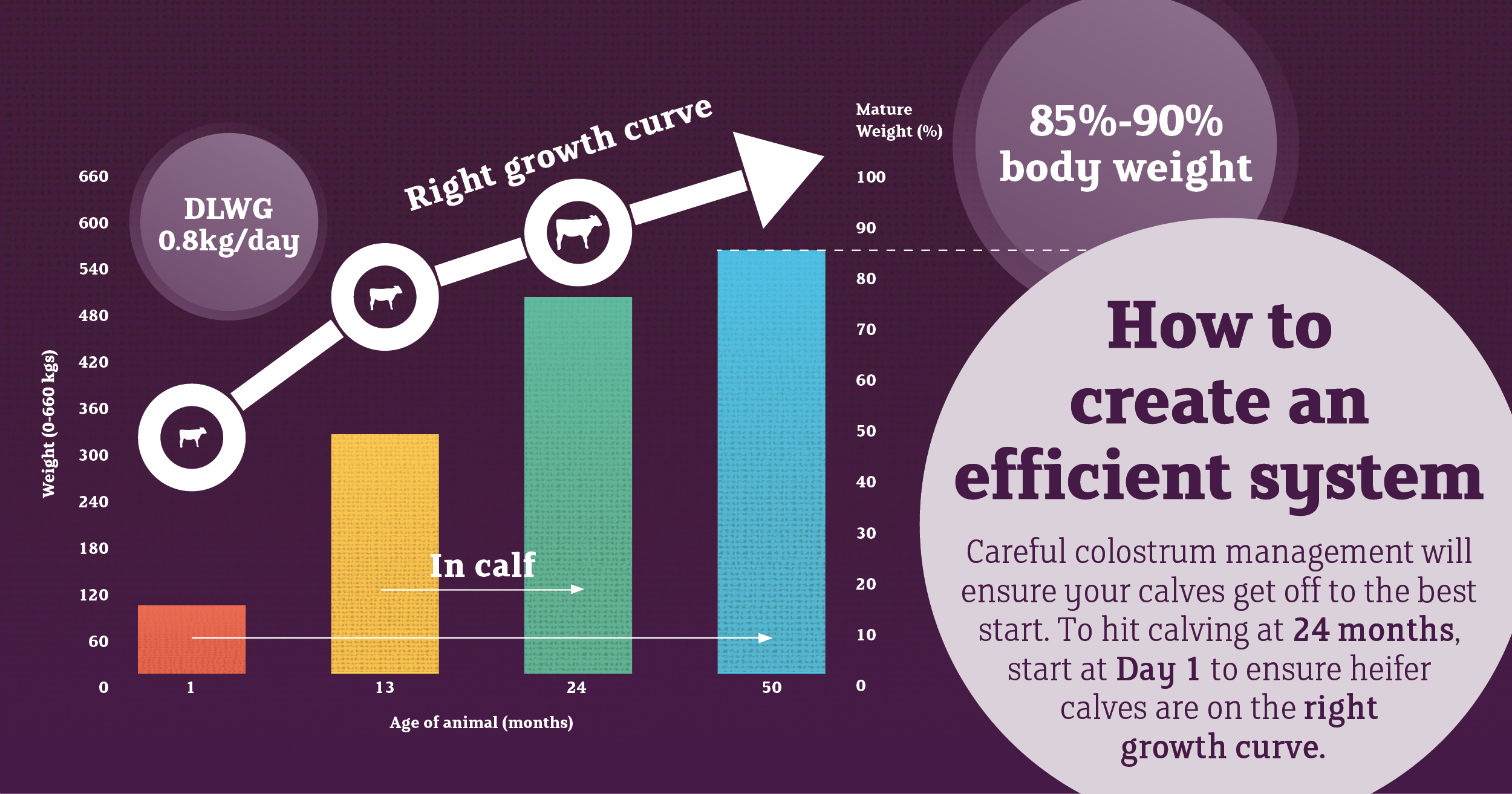
The calf “Growth Triangle”
If your calves are going to hit their growth target of 0.8kg per day, there are three key factors you need to consider:
- Environment
- Nutrition
- Health
We like to refer to these three elements as the “growth triangle”. By keeping your calves in a warm and suitable environment, providing them with the tools they need to fight disease, and ensuring they have the best nutrition in their diets, you’re helping them to grow more efficiently.
Put simply - warm, healthy calves grow much more efficiently than cold, sick calves!
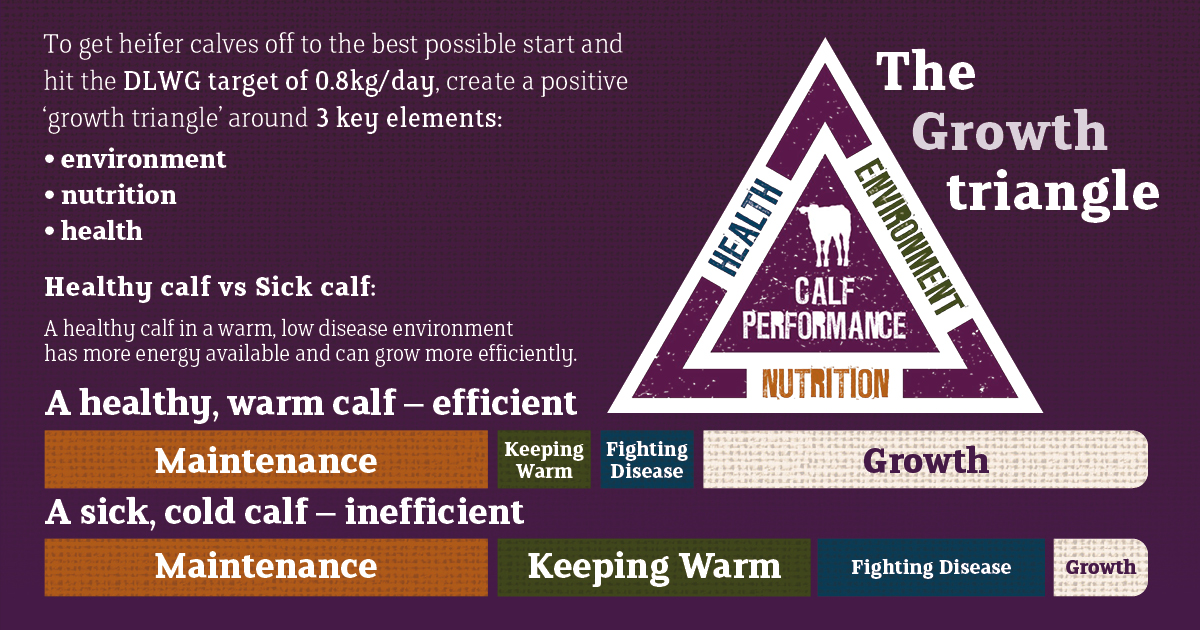
Maximising feed efficiency for optimal calf growth
“Feed efficiency” means the ability of an animal to turn feed nutrients into growth. An animal with high feed efficiency will grow more for every 100 grams of food they consume, than an animal with low feed efficiency.
A calf’s feed efficiency is at its highest during the milk-feeding period, and it reduces as the calf ages as shown in the graph below.
Take advantage of their high feed efficiency in the first two months of life to maximise their lifetime growth.

The benefits of feeding calves more milk replacer
A calf’s main source of nutrition during their first 3-4 weeks is milk - by feeding a higher amount of milk replacer from a few days old, you will help:
- Maximise feed efficiency
- Prevent early weight loss
- Maximise early growth potential
- Improve health
- Improve future performance
But not all milk replacer is the same - the type of milk replacer and its ingredients can have an impact on the calf’s performance. We found that calves who were fed milk replacer with a high inclusion level of Imunopro® grew faster compared to those fed milk replacer with a low-level inclusion of Imunopro®, as shown in the table below.
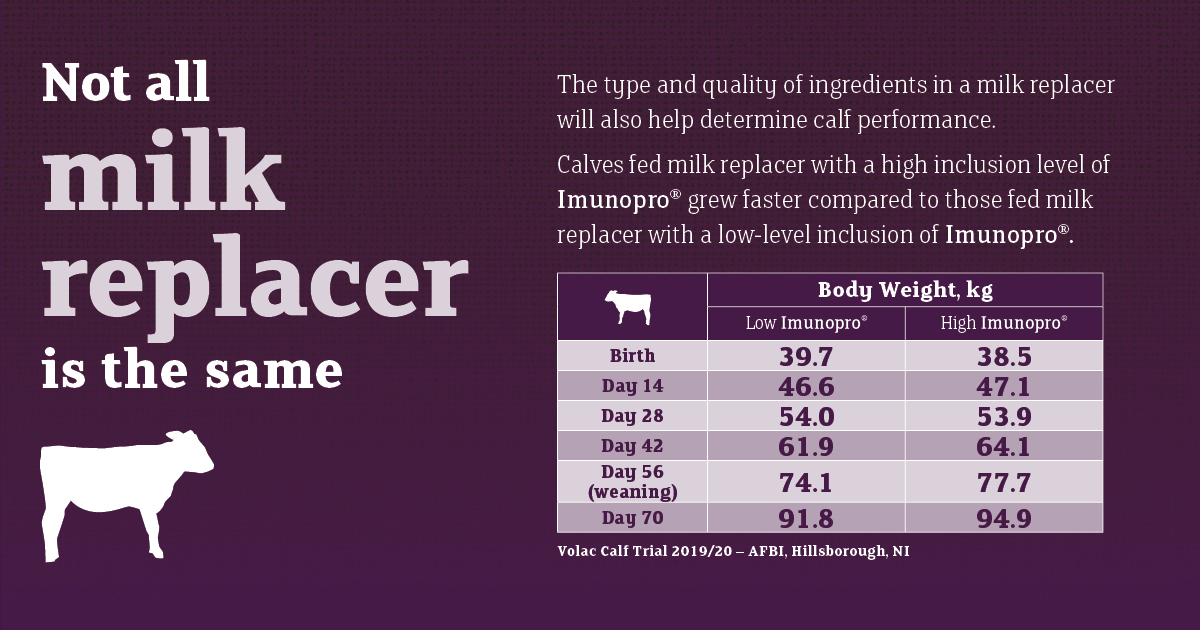
The benefits of feeding a high-quality milk replacer
Feeding your calves a high-quality milk replacer with optimum levels of vitamins and trace minerals has many benefits, both for the calves and for you as the farmer.
Here’s how the right milk replacer can benefit your farm:
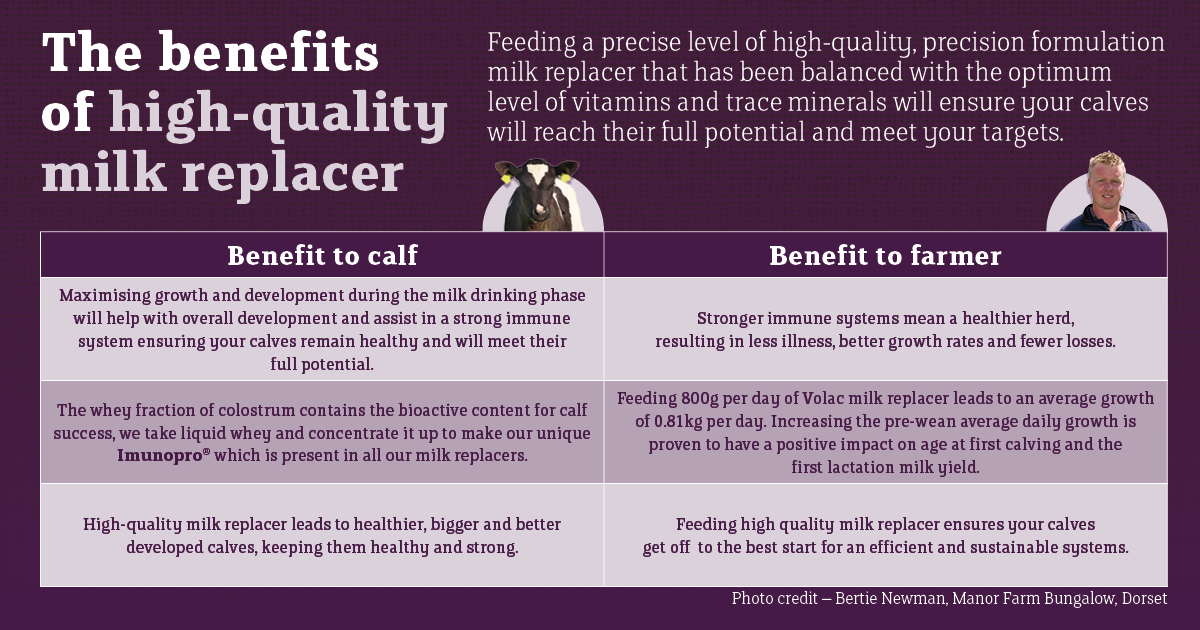
What is Imunopro®?
It’s important to choose a milk replacer that will give your calves what they need to grow and develop.
We have developed Imunopro®, our blend of super-concentrated functional milk proteins. These proteins make up most of the protein content in colostrum, and carry most of the biologically valuable ingredients to the calf including immunoglobins and amino acids.
Imunopro® contains 35% concentrated milk protein - that’s twice as much as whey powder, which only contains 12.5 – 13% protein. Imunopro® also contains high levels of lysine and leucine, which are vital for growth and muscle protein synthesis.
For more information about what goes into Imunopro®, read our article here.
Imunopro powers our performance-formulated Lifeguard Range, including:
- ImunoGard®
- Heiferlac®
- Blossom® Hi-spec
- Blossom® Easymix
- Enerlac™
Learn more about the Lifeguard Range here.
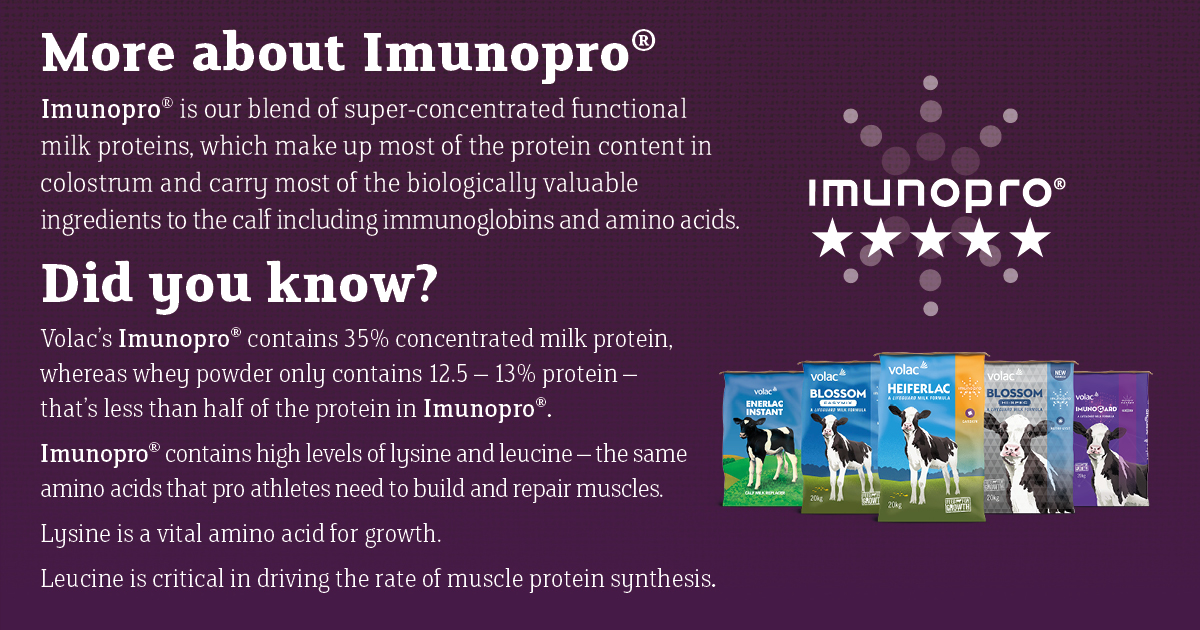
Check out our full infographic for more advice on feeding for efficiency:


For more information, technical bulletins and best practise advice for calf-rearing, visit the resources section of our website.
Published on: 10 October 2022
View all articles